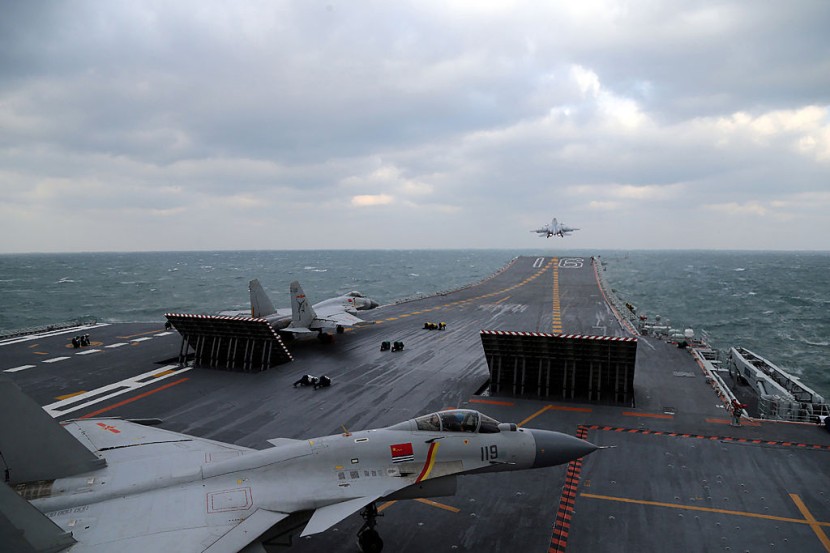
The Shenyang J-15B Navalised Flanker has been verified to be specialized for carrier operations, as the Fujian is a Ford-class supercarrier equivalent.
Once the Fujian is launched on June 17, it will be the main heavy fighter stationed on the carrier once it enters service, which took ten years to develop, per SCMP.
Variants of the J-series
The J-11B, which ended production in 2018, J-15 comprises the fighter air wings of China's two carriers, like the J-16 twin-seater.
It is currently in production on a larger scale compared to any Flanker variant globally and all variants of the Su-27 Flanker heavyweight fighter, reported Military Watch.
Another variant, the J-11D, is supposed to replace the J-11B in production and is designed as a single-seat version specialized for air combat. It has a superior design comparable to the Russian Su-35 super flanker.
The J-11D was expected to take advantage of China's more advanced combat aviation sector and provide superior air-to-air capabilities to all prior Flanker variants, including the J-16 and Su-35.
Composite material materials for a lighter and sturdy airframe are used in the airframe, advanced AESA radar, and incorporation of thrust-vectoring engines, stealth coatings, and some of the world's most sophisticated avionics and electronic warfare systems.
An improved engine similar to the Russian equivalent will equip the aircraft; overall, the J-16 outdo the Su-35 in most capabilities.
These improvements are its sensors, avionics, weaponry, and lighter airframe, while the J-11D has more composites, stealthier cross-section, better agility, and endurance to improve it as a variant.
This is similar to how the J-11B, considered China's most capable fighter in the early 2010s, had been used to advance the original J-15 fighter.
J-11D vs. the Shenyang J-15B Navalised Flanker
The variant was supposed to be canceled when the J-11B stop production, but many of the 200 B and airframes have improved modern avionics with AESA radar like the J-20 with weapon compatibility.
The J-20's advanced features, which make it one of only two fifth-generation fighters in production today at the squadron level, are assumed to be one of the reasons why a second, advanced land-based air superiority fighter was deemed unsuitable.
J-15B appears to be a maritime derivative of the J-11D. On the other hand, it suggests that the money spent developing a "Super Flanker" was not squandered, as the design is anticipated to remain and play a significant role in China's defensive strategy.
Plans to have double the fighters on the Fujian compared to the Liaoning and Shenyang means a larger fighter wing for missions. The advanced flanker may have more units produced and will support the advanced F-31 stealth fighter, which is smaller than the J-20.
Fujian's deck will have drones onboard with the J-15D electronic attack jet as the complete air wing when it enters service after testing.
The J-11D functions as an electronic warfare specialist and might be adapted for the army, but no news of that yet, even the current J-15 variant might end up as a non-naval unit as well. Although the PLAAF is dead set on the J-20 and FC-31 as the next-gen plane, it still wants them.
Planners see the Shenyang J-15B Navalised Flanker on the Fujian as an upgrade over other J-variants in service; the PLA is not dropping everything for 5th generation planes just yet.
© 2025 HNGN, All rights reserved. Do not reproduce without permission.








